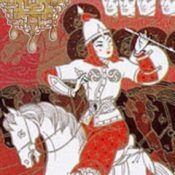Time to get into the muck of sources, political gambles, and how empires dissolve. It's Mongol (and Northern Yuan) Empire time!
Or, if you like to skip to the juicy parts, here's a video of me talking about Mandukhai of the Northern Yuan. You can always read up on my sources later, below.
Sources:
1. Paul Ratchnevsky, Genghis Khan: His Life and Legacy
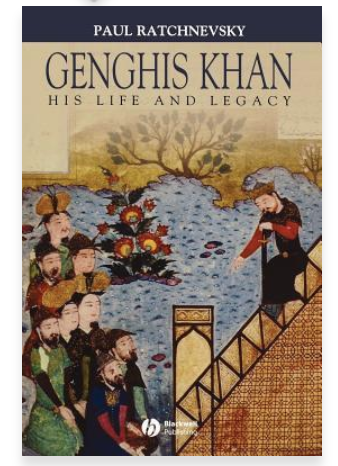
One of my personal favorites on the Mongol empire. The author focuses largely on Genghis Khan's (Temujin's) rise and consolidation of power. It is short, eloquent and exhaustively sourced--and remains one of my go-to-books for understanding the chronology and expansion of the early Mongol empire.
2. Friar Giovanni DiPlano Carpini, The Story of the Mongols Whom We Call the Tartars
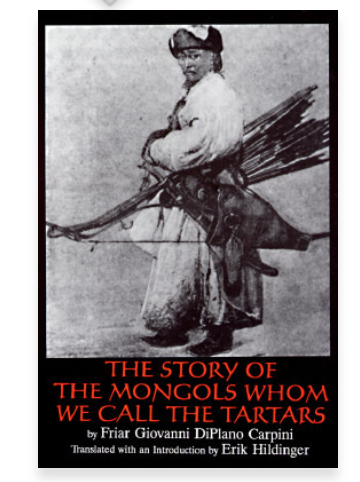
3. John Man, The Mongol Empire: Genghis Khan, his Heirs and the Founding of Modern China
A primary source from a European perspective on the Mongols under Guyuk Khan (who Plano Carpini describes as "[of]medium stature, very prudent and extremely shrewd, and serious and sedate in his manners."). This book is written as a first-hand account of Mongol culture when they were a unified empire and not broken into khanates, as they were in Mandukhai's time. A useful research-aid for understanding Mongol imperial culture (much of which was preserved in the culture of the Northern Yuan, including the justified Mongol arrogance). Plano Carpini was sent as a papal envoy, with hopes to maybe convert Guyuk to Christianity--specifically Catholic Christianity, not the Nestorian Christianity the Mongols were already well familiar with.
That didn't go over well. Guyuk, upon being declared khan, sent a truly blistering letter demanding the pope's immediate submission, reading in part:
"Thus the Eternal God Himself has killed and exterminated the people in those countries. How could anybody, without God’s order, merely from his own strength, kill and plunder? And when you go on to say, “I am a Christian, I honor God.” How do you think you know whom God will absolve and in whose favor He will exercise His mercy? How do you think you know that you dare to express such an opinion?
Through the power of God, all empires from the rising of the sun to its setting have been given to us and we own them. How could anyone achieve anything except by God’s order?"
Guyuk basically said that if Pope Innocent IV really had God's ear, then how come the Mongols had such a big empire? Clearly they were the instruments of God and they demanded his immediate subservience.

John Man, The Mongol Empire: Genghis Khan, his Heirs and the Founding of Modern China

John Man's work spends a great deal of time on the Yuan dynasty, the part of the Mongol empire that united (read: conquered, over many painful decades) northern Jin China and Southern China and made it whole under Kubilai. It also encompassed a lot of present day Mongolia and Korea, to name but a few.

As a result, Man's work focuses a lot on the constant wars between Central Asian powers and China.
The rise of the Ming dynasty and fall of the Yuan --and the retreat of it's members into Central Asia to form the Northern Yuan, the people Mandukhai went onto lead--is not covered here, but 'tis essential framing for understanding conflicts between a newly unified China (under the Yuan or Ming, the problems posed by steppe nomads) and it's unsettled neighbors to the north, from squabbles with the Chagatai khanate during the old empire, and the Toluid civil war (1260-1264).

It was this empire--even using the name Northern Yuan was an implicit threat to the Ming--that Mandukhai Khatun would later come into command of in 1479 and unify the warring tribes into an actual state.
4. Johan Elverskog, Buddhism and Islam on the Silk Road
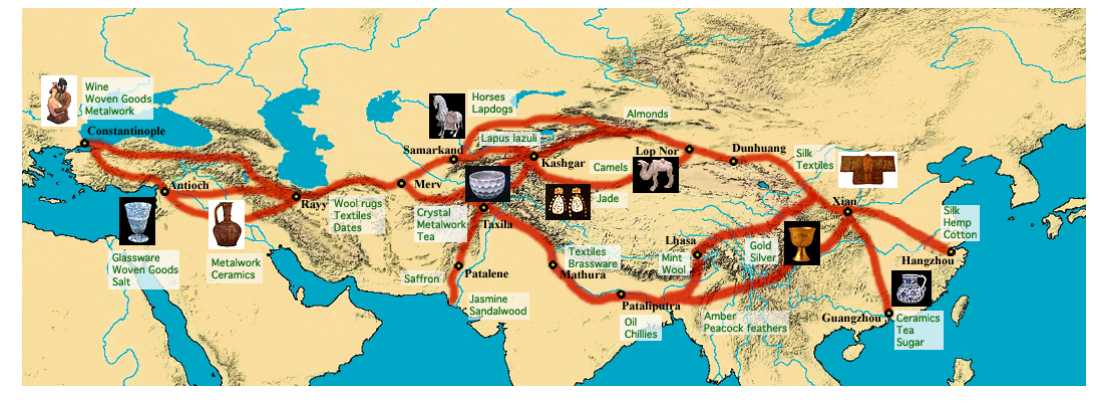
A lot of things travelled along the Silk Road during and after the Mongol empire's peak: items, horse-archers, and perhaps most importantly, religions. Nestorian Christianity made its way east some centuries before, but the other two religions that mixed in (besides animism, ancestor worship, Taoism etc.) were Islam and Buddhism.
Elverskog takes great pains to deflate the popular myth that Islam is an inherently violent religion and Buddhism entirely a religion of pacifists. Adherents of both religions constantly jockeyed for power in the courts of the Khanates, taking advantage of the Mongol policy of religious tolerance (Some might say over-tolerance: Genghis Khan was so impressed by the Taoist sage Master of the Eternal Spring that he gave the religious leader's sect immunity from taxes, something that resulted in a lot of unforeseen bloodshed and forced conversions to that school once he got back to China).
But for all that bloodshed, there was a lot of cooperation as well. The Ilkhanate of the Middle East cooperated with the Yuan dynasty, especially the dynamic partnership/thriving intellectual bro-mance of the Mongol administrator Bolad Chengxiang and Ilkhanate historian Rashid Al-Din which we don't have time to get into now.
What Elverskog's work is excellent at is showing the conflicts, cooperations and concessions that Buddhism and Islam experienced as they spread through central Asia, ebbing and flowing like tides.
Of note to Mandukhai in particular was that her descendant, the Altan Khan (1508-1582) who helped establish and add legitimacy to the office of Dalai Lama, a tradition that would continue for decades. As Elverskog put it, at great length, the Altan Khan had more than a small hand in Mongolia's eventual conversion to Buddhism:
"However, in contradiction to how later histories would present the meeting of Altan Khan and the Dalai Lama, this event was not a foregone conclusion, Indeed, contrary to later Mongol and Tibetan historians it was not the inevitable summation of history. Of course, for these historians it made sense to present it in this way since it legitimated their present, a world in which the majority of Mongols were Gelukpa Buddhists on account of Altan Khan's having met the Dalai Lama. During the reign of Altan Khan and his immediate successors, however, the Dalai Lama and his Gelukpa order had no exclusive claim to the Mongols' hearts and minds. they were simply one of a hodgepodge of religious specialists who provided their services at the Mongol Court.
Elverskog continues:
With the subsequent rise of the Gelukpa, however, this diffuse religiosity was to be readily forgotten. Instead, all that was to be remembered was that the Altan Khan met the Third Dalai Lama and thus the Mongols supported the Gelukpa order...Altan Khan faced another crisis...the increased Sino-Mongol intercourse ushered in by the 1571 treaty peace accord had been a double edged sword. While it had brought normalization in trade relations and improved the economic situation among the Mongols, it had also enabled the urban diseases of China to run rampant across the steppe with devastating consequences. Indeed, it was these epidemics that not only put a halt to the rise of the Mongols at this time and enabled the Manchus to rise in their place, but also opened the door for Tibetan lamas and their vast repertoire of medical lore and tantric lore to be invited back in among the Mongols."
Elverskog's work is vital to understanding why the world worships the way it does today, and how Mandukhai unifying the Northern Yuan led to greater conflict, trade and religious exchange between the Tibetan, Chinese and steppe cultures.
5. Rene Grousset, The Empire of the Steppes: a History of Central Asia
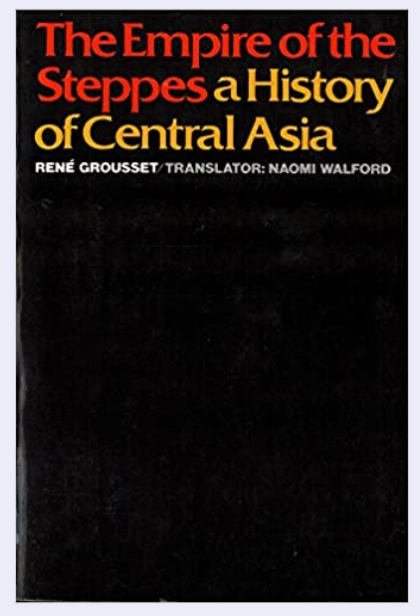
Grousset is one of the most formidable Mongolists both to read and in scope of history he deals with. There are untold myriads of books about Genghis Khan, but less comprehensive studies on the type of empire he perfected.
This book doesn't just cover the apex of steppe empires (the Mongols) but also records the rises and recessions of the Scythians, Alans, Xiongnu, etc. It's valuable reading for the context it provides on the general shape, composition and strengths of steppe empires.
6. Morris Rossabi, The Mongols: A Very Short Introduction
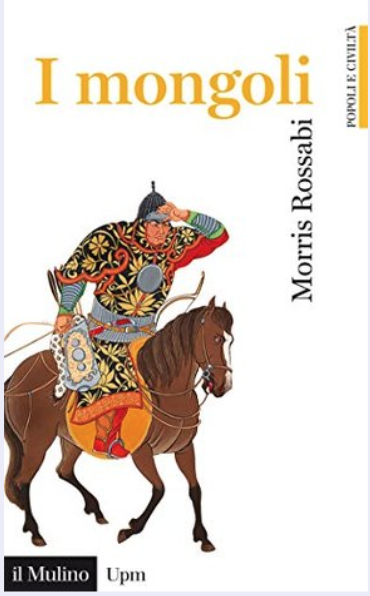
An excellent short summary of the Mongol empire. Rossabi has a gift for concision, clarify inter-Mongol conflicts (like the constant fighting between the Persian Ilkhanate and the Golden Horde--the Golden Horde of Russia believed they had been given all western lands, particularly the rich pasturelands of what is now Armenia and Azerbaijan. To them, Hulegu's 1250s invasion of the Middle East culminating with the sack of Baghdad was not only an insult, but theft of lands that they didn't occupy YET and definitely viewed as theirs in potentia. When Hulegu decided to STAY in the Middle East and make his own khanate, it set off an on-and-off again war between his troops and the ulus of the Golden Horde). Sorry for that long digression, but Rossabi brings out the excitement in me. If you want your first book on the Mongol empire, and an understanding of how the khanates interacted not only with each other but with the people they assimilated, which helps contextualize Mandukhai's struggle for unity on the steppes as not a bug, but a feature of (re)founding an empire on the steppes.
7. Reuven Amitai-Preiss, Mongols and Mamluks: The Mamluk-Ilkhanid War, 1260-1281
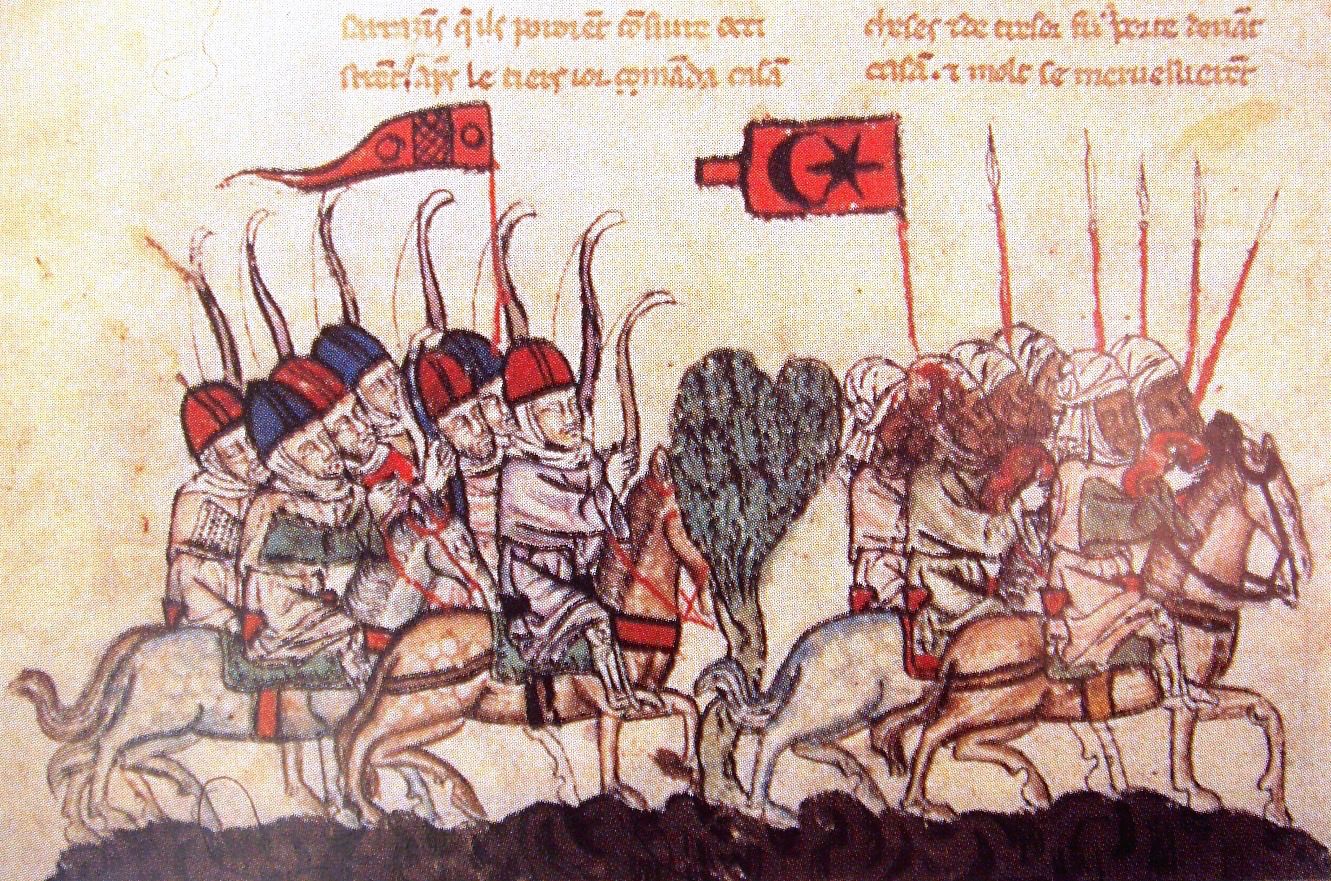
Speaking of the Ilkhanate, they sure liked to pick fights. While they were fighting off the Golden Horde, they also entered into a decades long cold-war with the Mamluks of Egypt. The Mamluks were largely transported slave-soldiers from Kipchak Turkic tribes to Egypt, who were excellent horse archers themselves. Anyway, studying the Ilkhanate-Mamluk cold war (largely in the frontiers of Syria when they did clash in actual combat) drives in just how hard administrating an khanate was. There was always something bad happening to someone, and no frontier could be considered truly secure for them throughout the short existence of the Ilkhanate.
The Ilkhanate's situation actually wasn't dissimilar to the board state that Mandukhai inherited from Manduul, her one-time husband generations later. The Oirat were as powerful if not stronger than her at the moment, the Ming couldn't send an army into the steppes without disaster befalling them, but neither could she antagonize them needlessly. She was beset on both sides by formidable adversaries. Her only hope was to unify what support she could drum up behind her and Dayan Monkh's marriage and use audacity as a shield to protect herself and her dynasty.
8. Erik Hildinger, Warriors of the Steppe: A Military History of Central Asia
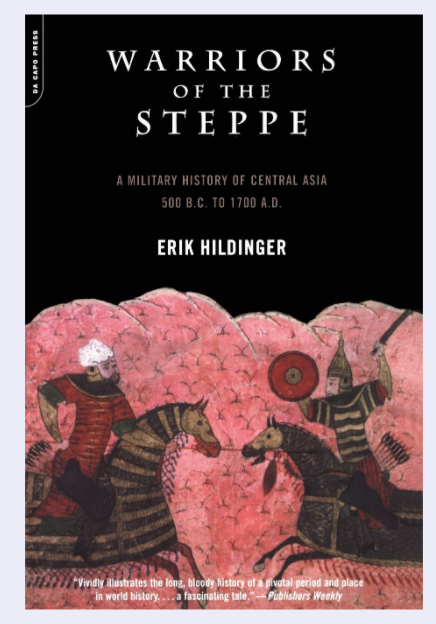
A shorter primer of what amounts to horse-archery and it's role in history. The text covers from the Xiongnu to the Battle of Ankara. It was from this source, that in an earlier draft of this video (and before that, taking the talk about Mandukhai to open mics) I used to build tension. I wasn't able to recall, whether in the climactic battle at the end of my story, Mandukhai was horsed or on foot. Being a storyteller first, and in front of people, I improvised: Mandukhai was on foot.
Being on foot, in Mongol culture at the time, was the universal signal that you planned to fight to the death. One forfeited the advantage of flight and gained better accuracy with one's bowshots, due to not being jostled by a moving horse. It was practiced, notably, by the Mongols at their defeat at the Battle of Ain Jalut against the Mamluks.
One problem, though, is that while this detail is great for the story of Mandukhai, none of the sources I have named here explicitly mention her being unhorsed in her battle with the Oirats, so while great for drama, the bit was cut for the sake of accuracy. Her life is plenty exciting as it was, anyway.
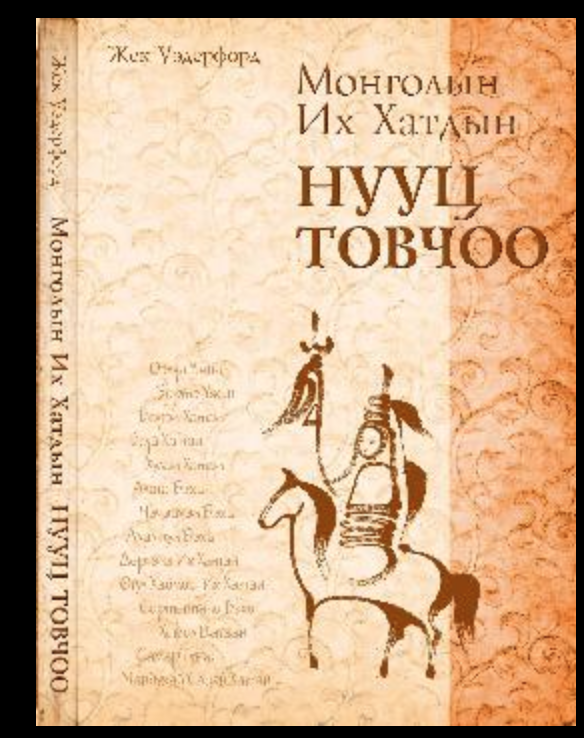
This is my main source on Mandukhai Khatun. Jack Weatherford is a figure I have mixed feelings about. Weatherford is a dedicated man, even moving to Mongolia to better pursue his research on the Mongol empire, but I still have reservations about his early work. His first book on Genghis Khan brushed aside the Mongol bodycount as they built and maintained their empire (at considerable human cost, the lowball estimates are anywhere between ten and fourteen million people but are likely much higher) and is closer to a hagiography of the khagan.
However, Weatherford is more measured in this analysis of the women of the Mongol empire, who in his estimation, were absolutely essential in making the Mongol empire last as long as it did. He focuses on Genghis Khan's eight daughters who he married out among the Oirats to shore up support on the home front to start with (most casual students of history can name the four sons that Genghis considered for the succession: Jochi, Chagatai, Ogedei, and Tolui but even I have trouble remembering the name of even one of Genghis Khans daughters, a real blindspot in the historical narrative) and then expands beyond the lifetime of the great khan, into the successor states.
Mandukhai gets 2 whole chapters dedicated to her, and Weatherford is exacting in his documentation and providing context for her actions. He writes with charm, charisma and a storytellers sense of pacing and drama. I would heartily recommend this book.
And don't mistake my leeriness of Weatherford's dismissal of Mongol atrocities for dislike or distrust. No source is perfect, and writing a balanced account of the Mongols is very, very difficult. It was Weatherford's work, after all, who early on in life, set me down the path of looking into the Mongol empires.
9. Frank McLynn, Genghis Khan: His Conquests, His Empire, His Legacy.
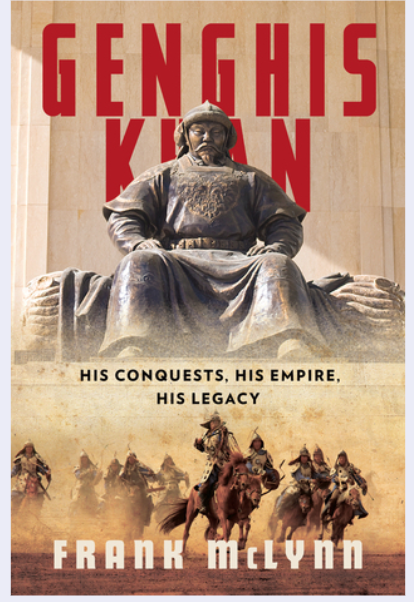
An excellent overview of the Mongol Empire, with exhaustive sections on steppe economics and environmental limitations would are true no matter who is running the show, Genghis or Mandukhai. I recommend it as a good reference book for the first generation of the Mongol empire, as it generally doesn't tread to far beyond Genghis's death.
So, that's a brief (!) summary of some of the sources I used to make the video above. Huzzah!
World History With Charlie Q & AWorld History With Charlie Q & A!
Posted by Sewer Rats Productions on Thursday, June 25, 2020
